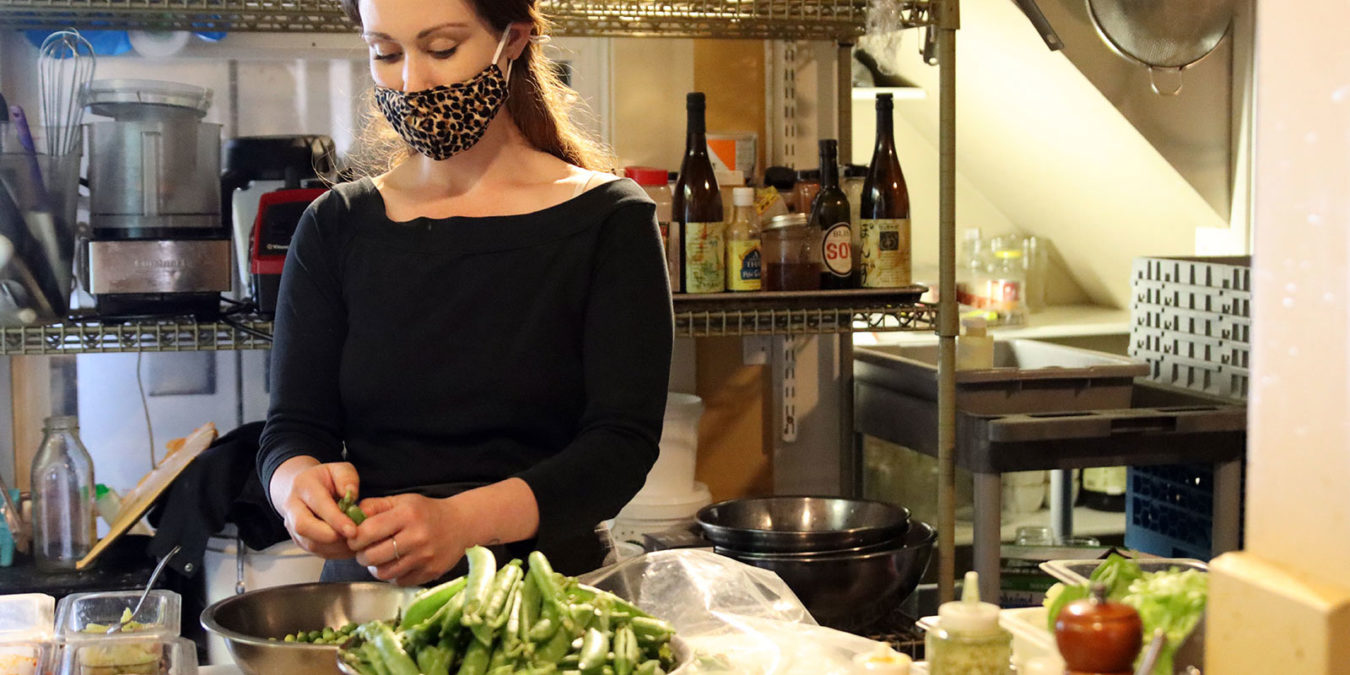 In the winter months, it is sometimes difficult to find interesting things to write about, but I am lucky enough that my colleagues at the inns are always happy to help me out! This week, Chef Molly threw me an idea about an interesting ingredient she likes to use in some of her delicious dishes – flowers!
In the winter months, it is sometimes difficult to find interesting things to write about, but I am lucky enough that my colleagues at the inns are always happy to help me out! This week, Chef Molly threw me an idea about an interesting ingredient she likes to use in some of her delicious dishes – flowers!
Flowers can be fragrant additions to almost any dish, as well as add an element of visual surprise. Make sure that you use them sparingly to start, to make sure they don’t cause you digestive or allergy issues.
“I am really into floral flavors in foods, but they are tricky to use without making your food taste like soap,” Molly said. “Used properly, you can add flavors that make people stop and think when they take a bite, and end up not quite sure what they’re tasting, but knowing they like it!”
Here are Molly’s tips to help make sure you’re doing it right.
1. Store dry culinary flowers away from other foods, in tightly sealed containers. The flowers tend to be aromatic, while flours, sugars and nuts are super absorbent. (Molly learned this the hard way when everything she made came out tasting like lavendar!)
2. You can always add more, but you can never take away. For first-time recipes, err on the side of under rather than over. When doubling recipes, don’t double the flowers, especially with liquid flavorings such as rose water.
3. Infusions are your friend. You can mix some dry flowers into a container of sugar and let it sit. After a week, you will have scented sugar. Molly leaves the flowers in the container, straining out the sugar as needed, then adding more to fill the container. Once she notices the flavor weakening, she will replace the flowers. Just make sure to mix it well after additions. Using this sugar is a milder way to add floral flavors and is less likely to end up soapy-tasting.
4. Fresh edible flowers are a fast, easy way to dress up any plate or dish and make people think you’re an amazing cook. (Come on, Molly – you totally are though!) Molly’s mom, Judy, has a large rose garden, so she tops everything with a couple of roses, and people swoon! Here on the island, calendula grows like a weed. It’s blooming in our garden at the inns more often than not. Molly goes out in the mornings and picks a few so she can sprinkle petals on the breakfast plates for a splash of color.
– you totally are though!) Molly’s mom, Judy, has a large rose garden, so she tops everything with a couple of roses, and people swoon! Here on the island, calendula grows like a weed. It’s blooming in our garden at the inns more often than not. Molly goes out in the mornings and picks a few so she can sprinkle petals on the breakfast plates for a splash of color.
Pairing Suggestions
Lavender tastes sweet and rounded and is softer than it smells, so it goes well with lemon, orange, chocolate, almond, coffee, and salmon.
Rose is delicate and tastes like it smells, so it is the easiest to overuse. It pairs well with strawberry, raspberry, and nuts.
Calendula is peppery with a sweetish finish; when dried, it can be used as saffron and gets along with salads, goat cheese, chicken, and fish.

